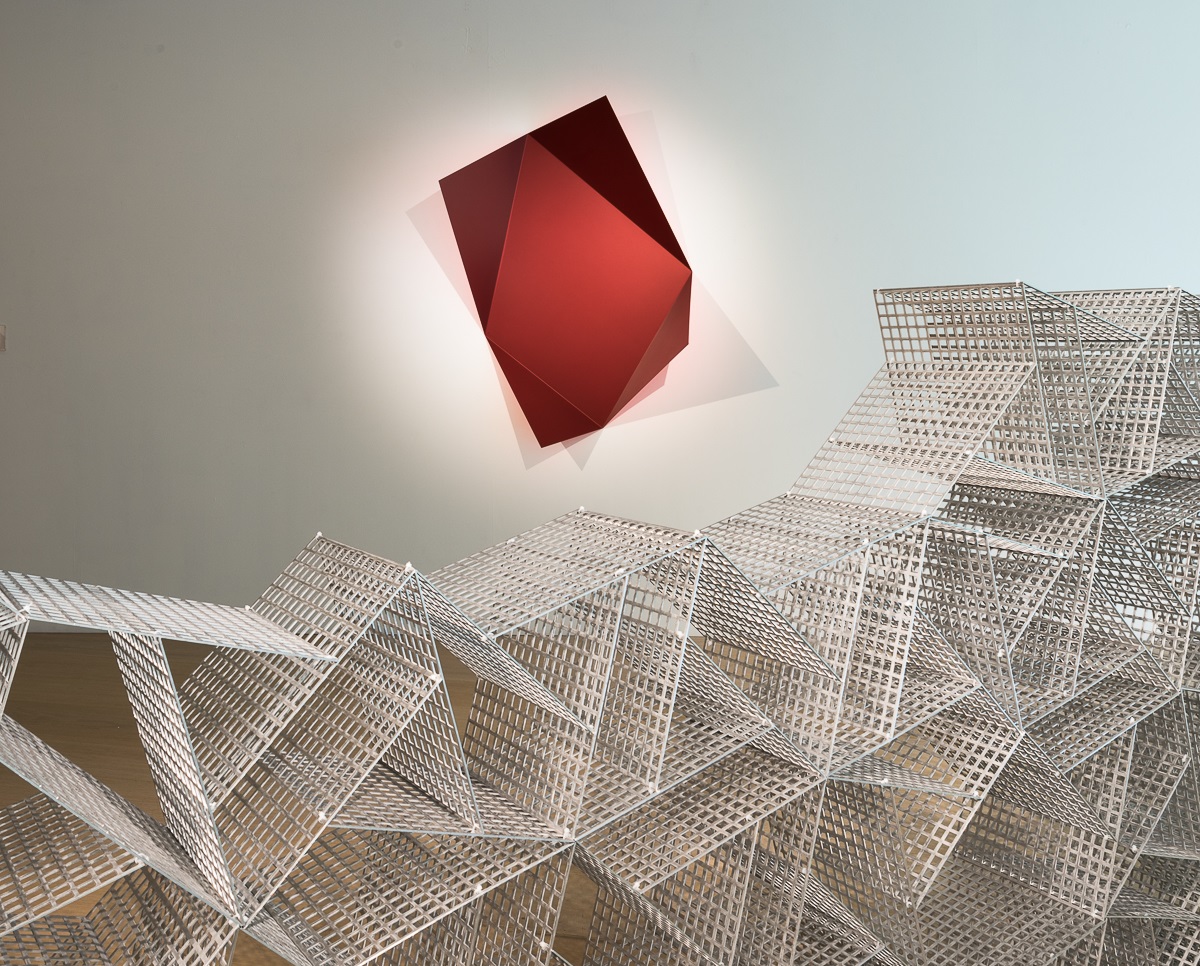


Image: Installation view of Women to Watch UK: Metal at Phillips, 14 - 21 November 2017. Courtesy of Phillips.
Claire Barclay, Sara Barker, Rana Begum, Alison Wilding
The National Museum of Women in the Arts in Washington is the only museum of its kind in the world. As well as housing a collection of around 5,000 works by women artists, its mission is also to promote better representation of women artists. The museum serves as a vital centre for thought leadership, community engagement, and social change. If you would like to get riled up about the position of women artists in the world, visit the museum’s fact page.
‘Women to Watch’ is a biannual event funded and organised by the various international committees of the Friends of NMWA. Its purpose is to bring to the attention of a wider US public work by artists that has not yet achieved the recognition there that it deserves. This year they asked me to select the British based artists for Women to Watch, so for the first time I am writing a Dispatch about a show I have curated myself. As a way of unifying the different international contributions, each ‘chapter’ of the Women to Watch project is themed, and I was asked to select artists appropriate to the theme ‘metal’. All four women represented here are artists whose work I have admired for a long time, though they are of different generations. None had ever shown together before, but reassuringly, all were delighted to be included in this line-up.
The first floor space at Phillips benefits from natural light at both ends, looking out over the green space of Berkeley Square to the west. A low-ceilinged gallery with pale wood floor, it manages to be airy yet intimate at the same time. The lifts bring you out into the middle of the gallery where you encounter Alison Wilding’s steel and polypropylene sculpture Displace. Planted four-square on the floor, its dark metal upright form grasps a translucent white ziggurat that projects unfeasibly out into space. It is an essay in relative volumes, in contrasting temperatures and densities of materials poised in powerful conjunction. Beyond it are two tables of maquettes: the first, Baby Shimmy, is made of mirror finished stainless steel and sits on a cast concrete base. Formed of interlocking and stacked flat rods, the sculpture holds in its recesses a series of spheres made of semi-precious stones. The play of reflections between the closely stacked elements gives the whole an optical illusion of transparency – a shimmering quality that is almost magically immaterial.
One of the pleasures of making an exhibition is the discovery of correspondences between works that had not been foreseen. Looking back from Baby Shimmy, past Displace, Rana Begum’s swooping work Mesh sits in front of the floor to ceiling windows overlooking the square. Made up of modular grids of pale aluminium, it is held together with cable-ties that give it a nonchalant, provisional air. Though the work has existed in other forms for a while, the artist has developed and finished it on site. Lighting from behind emphasises the internal complexity of the irregular configurations of fine metal mesh. Shadows are thrown across the floor, distorting the form once again and adding a gravity-defying sense of fragility.
On the wall nearby is one of Begum’s beguiling folded metal works. Spray painted in impossibly velvety red on the face, the reverse side is painted an almost fluorescent orange that reflects a halo of colour onto the wall. In the end space is an as-yet untitled work by Claire Barclay. It consists of three rusted metal cages that in themselves evoke a powerful series of emotions. Inside the cages, the artist has suspended lung-like fabric bags that are printed with what look like bloody smears. A more visceral, more confronting statement than anything I have seen before by Barclay, this is work that demonstrates all of the formal assurance we know, and inflects it for the kind of year that 2017 has been.
At the opposite end of the gallery are three spectral works by the second Glasgow based artist in the selection, Sara Barker. Barker began getting attention in the Scottish scene about a decade ago and has since shown numerous times in Europe as well as having solo presentations in public spaces in Glasgow and Edinburgh in the last couple of years. The works selected for the Women to Watch project reflect, in very summary form, the arc of development of her work over that time. On the left as you enter the space, the most minimal sculpture rests tenuously on a mirror base. Tall and skinny, you could see it as either emerging from the wall or resting against it for support – a barely-there drawing in space of white metal wire. The artist has defined a territory for herself that exists between the disciplines of drawing, painting and sculpture, using painted metal and calligraphic devices that extend out into the space of the viewer. The central work here, entitled Forecasts a handful of blots and clouds and shapes 2017, was only finished in the late summer and has been whizzed down to London just for us following its first outing in Glasgow. While the exhibition at the Fruitmarket in Edinburgh last year revealed a hitherto unknown interest in figuration, this latest work is the most painterly that I have seen to date.
You will have only a week to catch this show, and it is a great opportunity to see some very substantial work by artists one does not often see in such a prominent space in central London. And if that encourages you to ponder the gender imbalances in the art world along the way, all well and good.
Caroline Douglas
Director
Phillips, 30 Berkeley Square, London W1J 6EX. Open Monday - Friday 10.00 – 18.00. Exhibition takes place 14 - 21 November 2017. www.phillips.com